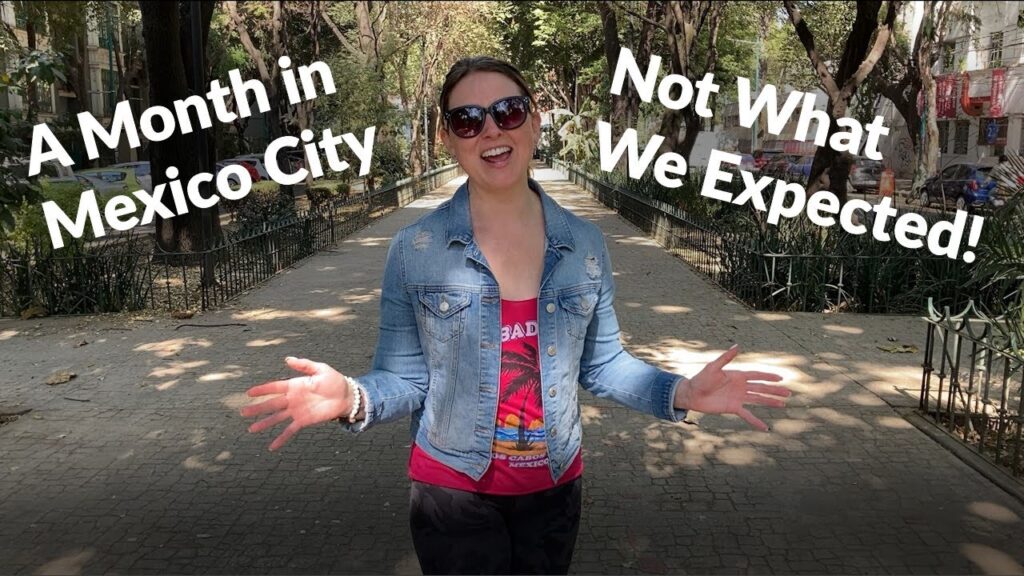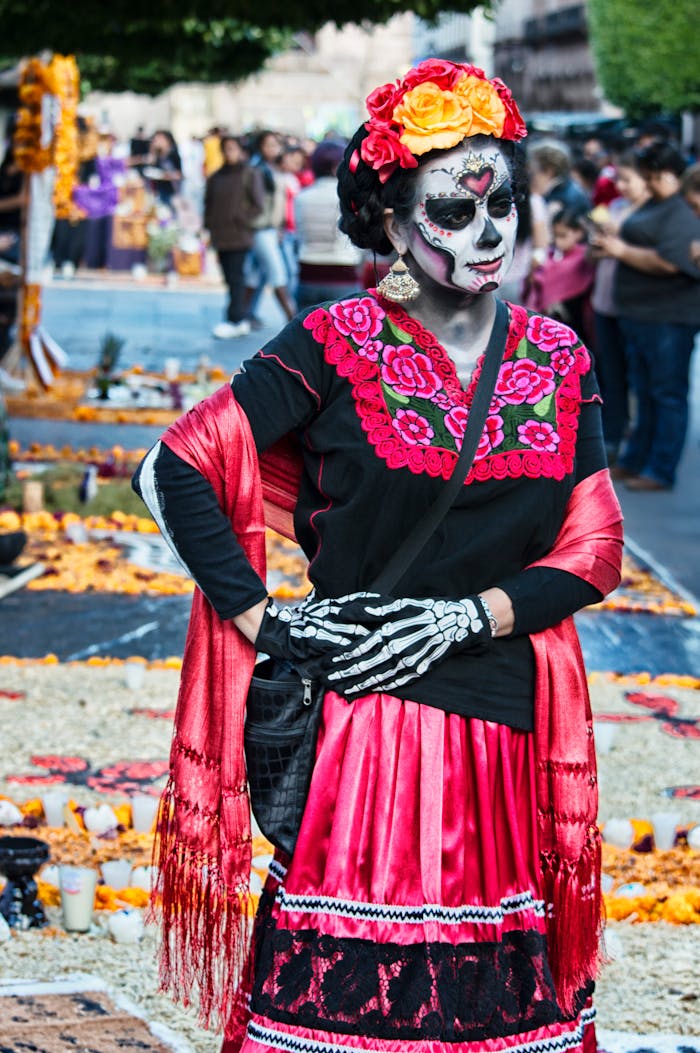Cultural Richness of Mexico City
Mexico City stands as a monumental canvas, painted with the broad strokes of ancient civilizations and the detailed lines of modern vibrancy. This sprawling metropolis is a treasure trove of cultural experiences, from the ruins of Tenochtitlán, the heart of the Aztec Empire, to centuries-old colonial architecture. Visitors are not just spectators but participants in an ongoing story that weaves through its streets and plazas.
The city’s historical center, “Centro Histórico,” is a UNESCO World Heritage Site and houses some of the country’s most iconic landmarks. The Zócalo, Mexico City’s main square and the second-largest city square in the world, is surrounded by landmarks including the majestic Metropolitan Cathedral and the National Palace, which features murals by the renowned artist Diego Rivera. Each corner of this district tells a part of Mexico’s rich past, inviting travelers to explore and immerse themselves in its living history.
Museums and Art Galleries are abundant and showcase the diversity of Mexican culture. The National Museum of Anthropology is a must-visit for anyone interested in pre-Hispanic history and art. Additionally, the Frida Kahlo Museum, also known as Casa Azul, provides a deeply personal glimpse into the life and work of one of Mexico’s most famous artists. The variety of art spaces range from classical to contemporary, echoing the country’s complex cultural narrative.
Festivals and performances are woven into the fabric of life in Mexico City. Whether it’s the colorful festivities of Day of the Dead or the passionate performances of Ballet Folklórico de México, the city is always buzzing with cultural expressions. Year-round, the city’s stages and streets invite locals and tourists alike to witness a rich tradition of performing arts that reflect the multifaceted identity of this metropolis.
Gastronomy in Mexico City: A Culinary Adventure
Mexico City offers a vibrant and diverse culinary scene, reflecting the rich cultural heritage and a fusion of both ancient and modern culinary techniques. From the bustling street food vendors serving traditional tacos and tamales, to the high-end restaurants that are redefining contemporary Mexican cuisine, the capital city is a paradise for food lovers.
One cannot speak of Mexico City’s gastronomy without mentioning the beloved taco. This simple yet iconic dish comes in countless variations and can be found at almost every corner of the city. Whether you’re indulging in a taco al pastor with its marinated pork and pineapple, a taco de suadero with its tender beef, or a taco filled with exotic ingredients like edible flowers or insects, each taco offers a unique flavor experience.
Beyond tacos, Mexico City’s food markets are a culinary adventure in their own right. Wander through the vibrant aisles of La Merced or San Juan markets to discover a plethora of ingredients and prepared dishes. Sample exotic fruits, savor homemade salsas, and watch as your quesadillas and tlacoyos are made fresh on the spot. These markets offer an authentic glimpse into the daily life and eating habits of the locals.
For those with a sweet tooth, Mexico City will not disappoint. The city’s bakeries and sweet shops, known as dulcerías, tempt visitors with a variety of traditional treats such as churros filled with dulce de leche, flaky sugar-topped conchas, and the rich three-milk cake known as tres leches. Each dessert tells a story of Mexico’s past and present confectionary traditions.
In addition to street food and markets, Mexico City has a growing number of restaurants that are gaining international attention for their innovative take on Mexican cuisine. Chefs are incorporating local and seasonal ingredients to create dishes that honor traditional flavors while presenting them in a new and exciting way. These restaurants, often tucked away in the city’s charming neighborhoods, provide intimate and immersive dining experiences that are truly unique to Mexico City.
The Vibrant Street Art and Museums of Mexico City
Mexico City, an expansive metropolis, holds a unique and diverse art scene that seamlessly blends its rich history with modern creativity. The vivacious street art that adorns the city’s walls is not just a mere explosion of color; it is a reflection of the city’s soul, narrating stories from social and political to the deeply personal. As you walk through neighborhoods like Roma, Condesa, and beyond, large-scale murals and graffiti pieces invite onlookers to engage in a visual dialogue, often created by world-renowned artists like Saner and ROA, whose works have become landmarks in and of themselves.
Alongside the dynamic street art, Mexico City is home to an array of museums showcasing the full spectrum of art history. The renowned Museo Frida Kahlo, also known as La Casa Azul, invites visitors into the intimate world of one of Mexico’s most iconic artists. Another unmissable stop is the Museo Nacional de Arte (MUNAL), where the evolution of Mexican art can be explored, from pre-Hispanic times up to contemporary works. The diversity of the museum’s collection is a testament to the rich tapestry of Mexican culture and the unbroken thread of creativity that runs through it.
No visit to Mexico City’s art scenes would be complete without experiencing the masterpieces at the Palacio de Bellas Artes. This cultural center not only stands out for its magnificent architecture but also houses some of the most important murals by Diego Rivera, David Alfaro Siqueiros, and José Clemente Orozco. These grand pieces offer a magnified lens into the social and revolutionary narratives that have shaped the nation, making it a place where art history and political history interlace, capturing the attention and imagination of all who gaze upon them.
Exploring Mexico City’s Historical Landmarks
Mexico City, the vibrant heart of Mexico, is a tapestry of rich history and contemporary culture. A visit to the city is incomplete without exploring its historical landmarks, which tell the tales of ancient empires, colonial pursuits, and the birth of a nation. From the awe-inspiring Aztec ruins to the grand colonial architecture, each site offers a glimpse into the past and a chance to witness the architectural diversity that defines this megacity.
Centro Histórico, or the Historical Center, is known as the beating heart of Mexico City. Here, you can walk through the Plaza de la Constitución, commonly known as Zócalo, one of the largest city squares in the world. Bound by majestic buildings such as the Metropolitan Cathedral and the National Palace, the Zócalo’s vitality and significance are palpable. Just a short stroll away is Templo Mayor, a significant archaeological site and former temple of the Aztecs, where visitors can delve into pre-Hispanic history.
The charm of Mexico City’s historical landmarks also lies in their accessibility. Paseo de la Reforma, a grand boulevard inspired by the great avenues of Europe, offers a scenic walk that leads to the iconic Angel of Independence monument. Alongside the avenue, imposing sculptures and monuments narrate the country’s history, standing as silent watchers over the bustling city life. With each step in Mexico City, the confluence of the old and the new invites travelers to embark on an exciting journey through time.


